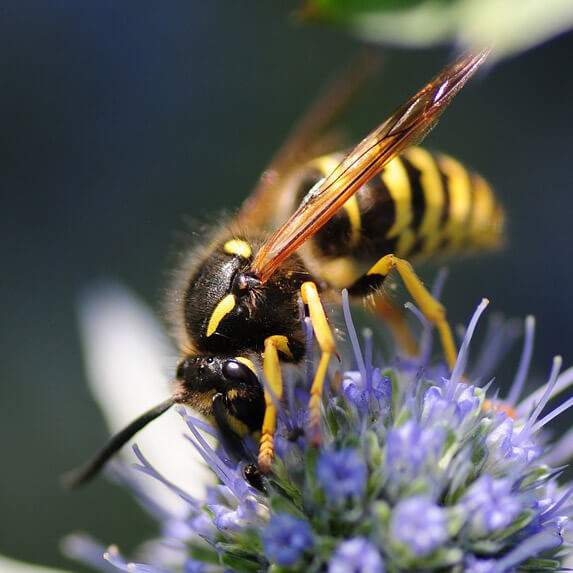
Yellow jackets are considered part of the wasp family. The workers are around ½ inch long and are often confused with honey bees when flying in and out of their nests. Yellow jackets are thinner than honey bees, do not have hair, do not carry pollen, and have pronounced yellow and black stripes. Their wings and antennas are slightly longer than a honey bee’s, too.
Yellow jackets will nest in the ground, soft dirt, tree stumps, pine straw, mulch, railroad ties, and other such places. Some yellow jackets, known as aerial yellow jackets, will make their nests in walls, floor joists, and eaves of homes 25 plus feet off the ground. Yellow jackets make their nests by chewing wood fiber into pulp. When nesting in a structure, this papery-like nest can sometimes be seen extending outside of the entry point.
Yellow jackets are able to sting multiple times and can be quite aggressive especially in late summer when their population is at its highest, around 5,000. A yellow jacket nest is a lot smaller than a honey bee nest, usually the size of a volleyball or basketball. Yellow jackets typically die out in the winter except for the queens that hibernate and begin building new nests in the late spring and early summer. In southern Alabama and southern Georgia and other warmer areas, nests can sometimes survive the winter and grow very large. Unlike honey bees, yellow jackets will not reuse an old nest.

